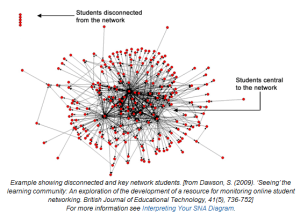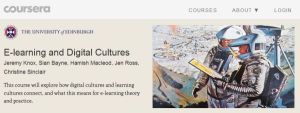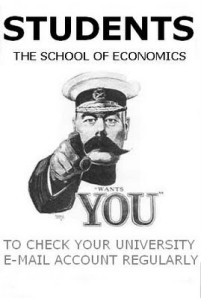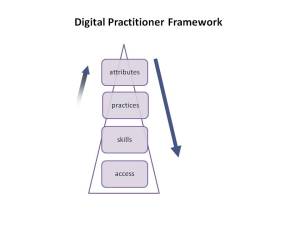Teachmeets: Guerilla CPD
Liz Bennett, Course Leader MSc Multimedia and Elearning, University of Huddersfield
Dubbed as ‘Guerilla CPD’ TeachMeets are a relative new-comer to the style, structure and principles of continuous professional development, CPD. They are radical in that their intention is to provide teachers with a forum for sharing their practices outside of the classroom without the structures of normal staff development. This article introduces TeachMeets and discusses how their principles and practices have been adapted for use in formal CPD.
What are TeachMeets?
TeachMeets were developed by a small group of people including Ewan McIntosh, who is an educational consultant and founder of NoTosh company which promotes innovative classroom practices. TeachMeets originated in the schools sector in that their adoption was originally focused on the needs of teachers in the primary and secondary schools. Participation in a TeachMeet is growing with teachers from other education sectors (for instance FE and HE) interested in their use. Teachmeets have also been co-ordinated by Schools of Education to encourage trainee teachers to build up their professional networks and engagement in CPD activities.
Teachmeets usually last a couple of hours often in the evening and are focussed around teachers sharing ideas with one another based on their classroom practices – the things that they’ve used and found effective in their teaching. The event is structured around two different lengths of presentation: the 2 minute or ‘nano’ presentation or a 7 minute or ‘micro’ delivery.
Very few rules that apply to TeachMeets but one of them is that they are not sponsored and they do not allow any commercial activity. They are ‘low key’ events in that they do not have a budget, although sometimes a small charge is made to lay on refreshments: for instance Bolton TeachMeet recently charged £2 for a pie and pea supper. The notion is that teachers organise their own events, often in the school premises and publicising them themselves, through word of mouth and its electronic equivalents including the TeachMeet wiki page (teachmeet.pbworks.com) and social media, such as Twitter.
Accusations of ‘technocentricity’
The focus of TeachMeets on innovation has led to accusations of ‘technocentricity’ – the principle that the technology takes centre stage and that participants are concerned with showing off their newest, whizzist gadget. However this is certainly not their intention and, as Ewan McIntosh says, if the technology takes over then the TeachMeet idea has failed.
The overlap between technology and pedagogy is one that is frequently debated by academic developers and learning technologists. There is a familiar adage of ‘prioritising the pedagogy over the technology’. However a more nuanced way of understanding the adoption of technology in the classroom suggests that rather than technology and pedagogy being discrete forms of knowledge, instead there is overlap between the two. As Mira Vogel, concluded in her literature report for the HEA on the role of Academic Developers there is a need for technological skills and understanding and that this need “challenges the prevailing espoused theory that the technicalities should be subordinated to educational concerns” (2009, p.14). Likewise Mishra and Koehler (2006) note that it is necessary for teachers to have new forms of knowledge when adopting technology in their teaching practices that it is the knowledge of how the technology interacts with the content and pedagogy. They argue that it is inappropriate to separate technological skills from the way that they impact on both the content knowledge (what is going to be taught) and the pedagogical knowledge (how it is going to be taught).
Mishra and Koehler (2006) have theorised the way that technology, pedagogy and content knowledge interact. Figure XX illustrates intersections between these types of knowledge with at the centre of the Venn diagram is the technological, pedagogical and content knowledge (TPCK). Kennedy and Lefevre (2009) explain these intersections as new forms of expertise which requires all three forms of distinct knowledge (content, pedagogical and technological) as well as an understanding of the way these three components interact with one another:
a teacher capable of negotiating these relationships represents a form of expertise different from, and greater than, the knowledge of a disciplinary expert (say a mathematician or a historian), a technology expert (a computer scientist) and a pedagogical expert (an experienced educator). Effective technology integration for pedagogy around specific subject matter requires developing sensitivity to the dynamic relationship between all three components. (2009, np)
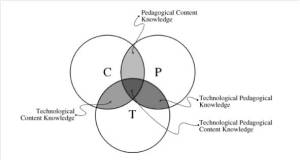
Figure xx Pedagogical Technological Content Knowledge, PTCK. The Three Circles, Content, Pedagogy, and Technology, Overlap to Lead to Four More Kinds of Interrelated Knowledge (Source: Mishra and Koehler, 2006, p.1025)
The PTCK model suggests that to effectively integrate technology into one’s teaching practices requires all three forms of knowledge as well as knowledge of how each interacts with the other. Teacher education has traditionally been concerned with developing the pedagogic knowledge and pedagogic content knowledge. Hence a Post Graduate Certificate in Higher Education Practice may focus on principles of teaching and learning and participants are required to apply this to their own subject setting drawing on advice and guidance of mentors within their subject context and wider reading about the teaching of their subject. The use of technology is sometimes relegated to a session on using the VLE, virtual learning environment, or perhaps on interactive white boards. If this is the case then the technology is being taught as discrete separate form of knowledge, the technology knowledge and the connection between it and how the technology supports effective learning is likely to be missing.
The PTCK model proposes that there is a new type of knowledge needed in order to integrate technology into their classroom practices, this is the knowledge of the technology, the tools and how they work. TeachMeets provide examples of how new tools can be adopted and applied to support new approaches to teaching in classrooms, that is they exemplify Technological Pedagogical Knowledge.
The other aspect of the Venn diagram is applying knowledge of technology and pedagogy to one’s own subject area, and this is the intersection of all three circles – the Technological Pedagogical Content Knowledge. TeachMeets are open to teachers from all subject areas and there is much to be learned from exploring the contextual and subject related aspects to any teaching situation. Good teachers committed to their CPD will be asking themselves “what can I learn from this example? What is similar and different about my context and my subject?” Working across subject and sectoral boundaries is a topic that I return to later in this article.
Exploring the notion of ‘bottom up’
Whilst TeachMeets appear to be an interesting and imaginative way of doing CPD in which participants can take control over their direction and content of the event they do require some sort of facilitation. There is still a role as the host to make people feel welcome: both veterans and regulars. The facilitators must also encourage participation, which is achieved through signing up to the event on the TeachMeet wiki site and arrange the running order. More than this, Ewan McIntosh comments that it is the attitude of the people that lead the events is crucial and, in particular, the facilitators need to value looking irreverently at what teachers do and to challenge existing ways of thinking. These attributes of facilitation and vision are likely to be critical to the success of this model and to enable it to grow and develop.
TeachMeets are part of a broader movement – the ‘unconferencing movement’ which suggests that the value of a conference is not the key notes, or even the workshops, but the conversations that happen in the corridor or over coffee. It is the social capital that we build by participating rather than the fact of attending. The ‘unconferencing’ idea derived from Harrison Owen’s (2008) idea of Open Space which argues for a similar fluid emergent style of meeting where there is no planned agenda, and where issues discussed come from the interest of the participants rather from someone with an organising role
Open Space Technology requires very few advance elements. There must be a clear and compelling theme, an interested and committed group, time and a place, and a leader or facilitator. Detailed advance agendas, plans, and materials are not only un-needed, they are usually counterproductive. (Owen, 2008, np)
Open Space, like TeachMeets, see there as a role for a ‘facilitator’ rather than a leader..Owen (2008)argues that leadership in the Open Space model must come from the group and that this presents challenges to those who like to control the learning environment. Instead the facilitator is responsible for setting the time and place for the event and providing a theme however the emphasis on the agenda emerging from the direction in which the participants take the discussion.
There are similarities too between the TeachMeet approach and the work of Dave Cormier (2008) who has proposed the notion of rhizomic learning, drawing from the notion of rhizome plant, one that propagates through spreading horizontally. It is an organisation without a central locus of control and one where no individual can really impose their will upon proceedings. This notion is one that applies to this sort of ‘bottom up’ CPD activity. Given cuts in the funding to local authorities it is one that is likely to be a model those in Government would approve.
Rhizomic learning, is part of a radical trend away from ‘teacher-led’ forms of education to ones that are led by the students. There are many other variants on this approach including many of which are focus on the use of networks facilitated via the internet to achieve their learning connections. See for example George Siemens and Stephen Downes’ (2012) theory of Connectivism and Cathy Davidson and Theo Goldberg’s participative learning (2009). Learning of this type enables people, independent of formal academic structures, to build their own learning network, to access learning materials online and to develop themselves propelled by their own motivation. It is an idea that has currency. Several key note speakers at conferences I’ve attended recently making reference to this informal approach to learning. See for example Alex Couros (2012), from University of Regina talking about learning to break dance from YouTube videos and informal contacts made through social media; Professor Andrew Ravenscroft (2012), from University of East London, discussing young people learning to play the guitar likewise from YouTube videos; Professor Stephen Heppell (2009), from University of Bournemouth, talking about viral, peer to peer learning made possible through social media. It appears that ideas of ‘bottom-up’ student-led approaches to learning are part of the zeitgeist of the current educational landscape.
TeachMeets and accredited learning
I have applied the ideas from TeachMeet within an accredited programme. The MSc Multimedia and Elearning at the University of Huddersfield is a course for teachers from a variety of sectors (e.g. school, FE and HE). It is a blended programme with around six day schools which take place on Saturday in Huddersfield, with the remaining contact mediated electronically. The TeachMeet format is used at the day schools. Students are invited to sign up to talk for 5 minutes on how they are using teaching tools in their classrooms to solve real challenges that teaching their subject in their context throws up. The session lasts for around an hour of the day school and ideas for technology use in practice are swapped.
After the day school the students often add to their blog posts to summarise what they learnt and to link to resources and the tools that were demonstrated. As focus for the MSc Multimedia and Elearning course is the transformations that are possible through technology our sessions have focussed on a range of technological tools. examples of the technical tools are given in Box XX. However, whist the technology is clearly a critical component for the MSc Multimedia and Elearning, it is only part of the story, much of the discussion is around how they can be used to support more active forms of learning for students.
The students on the MSc Multimedia and Elearning come from a range of sectors (including primary, secondary, FE and HE). Their subjects are likewise diverse, including both vocational courses (eg brick laying) and academic (eg degree in fashion). From my experience this breadth is not a barrier to activities which are based on principles of students sharing their stories and experiences. Students can learn from the different challenges of a different setting, and how their colleagues seek to address these. The depth of the discussion increases through the critical engagement that comes about through these discussions.
I fear I may sound rather apologetic for the technological focus of the MSc Multimedia and Elearning TeachMeets, but perhaps it is worth celebrating the power and potential of the web for enabling new forms of learning and for supporting new participatory and collaborative tools. Indeed one might argue that not focussing on the possibilities of new tools and technologies risks leaving educators copying fourteenth century, pre Guttenberg model of educational practices in which lectures were the dominate model and monks came to copy down by rote the text being read to them! Instead we live in an era of connectivity, where access to apparently infinite resources is free and almost immediate. As Barry Wellman has argued “The developed world is in the midst of a paradigm shift both in the ways in which people and institutions are connected. It is a shift from being bound up in homogenous “little boxes” to surfing life through diffuse, variegated social networks”(2002). Thus to not make use of the transformative potential of the web might be considered negligent for the 21st century educator.
The tools listed in Box XX are mostly fee and web based ones. They fall in to the category known as Web 2.0 in that they participatory and collaborative and through these features can support constructivist and social constructivist approaches to teaching and learning. Box XX provides identifies some of the possibilities of Web 2.0 tools in Higher Education practice.
| Web 2.0 is a set of internet services and practices that give a voice to individual users. Such services thereby encourage internet users to participate in various communities of knowledge building and knowledge sharing. (Crook, 2008,p8)
Web 2.0 technologies fit perfectly with a particular pedagogic approach – the constructivist approach – which holds that learning is most effective when active – by doing; undertaken in a community; and focused on the learner’s interests. (Committee of Inquiry into the Changing Learner Experience, 2009, p.36)
Web 2.0 technologies are attractive, allowing greater student independence and autonomy, greater collaboration, and increased pedagogic efficiency (Franklin and Van Harlem, 2007, p.1).
Box XX Possibilities of Web 2.0 tools identified in recent research reports. |
The potential of web based tools to support independent and or collaborative learning is only just coming into the awareness of many Higher Education educators. Armstrong and Franklin (2008, p.1) noted “usage to date has been driven primarily by the particular interests of individual members of staff rather than institutional policies”. This finding was also echoed by the Committee of Enquiry into Changing Learning Experience (2009) and UCISA’s, University and Colleges Information Systems Association, biannual survey of TEL practices in UK HEIs which reported low levels of interactive use of technology (Browne et al., 2010, p.26). See table XX
| |
Discussion boards |
Access to multimedia resources |
PDP |
Enquiry based learning |
Collaborative working |
| 100% |
0%
|
1%
|
3%
|
1%
|
3%
|
| 99-75% |
3%
|
8%
|
4%
|
14%
|
3%
|
| 74-50% |
3%
|
13%
|
2%
|
58%
|
23%
|
| 49-25% |
9%
|
37%
|
19%
|
4%
|
59%
|
| 24-1% |
59%
|
30%
|
53%
|
22%
|
0%
|
| 0% |
13%
|
|
7%
|
|
13%
|
| Don’t know/not answered |
|
6%
|
13%
|
|
|
Table XX Proportion of courses that use Technology Enhanced Learning (TEL) tools for teaching and learning purposes in all HEIs in the UK (After Browne et al., 2010, pp.10-26)
Conclusion
TeachMeets offer a new structure to CPD activities which are informal and led by participants. They also offer possibilities for more formal CPD courses and provides a model for engaging in more student to student interactions. Principles of building community within formal CPD programmes is not new, but the TeachMeet structure offers one way that it can be organised effectively. To attend a TeachMeet visit the TeachMeet wiki page at teachmeet.pbworks.com which contains information about events planned across the UK.
Further information about Teachmeets
Ewan McIntosh’s web page; http://www.notosh.com/2011/01/teachmeet/
TeachMeet wiki page; teachmeet.pbworks.com
References
Armstrong, J., & Franklin, T. (2008). A review of current and developing international practice in the use of social networking (Web 2.0) in higher education: Franklin Consulting.
Browne, T., Hewitt, R., Jenkins, M., Voce, J., & Yip, H. (2010). 2010 Survey of Technology Enhanced Learning for higher education in the UK: UCISA.
Committee of Inquiry into the Changing Learner Experience. (2009). Higher Education in a Web 2.0 World: Committee of Inquiry into the Changing Learner Experience.
Cormier, D. (2008). Rhizomatic Education: Community as Curriculum. Innovate: Journal of Online Education, 4(5).
Crook, C. (2008). Web 2.0 technologies for learning: The current landscape – opportunities, challenges and tensions: Becta.
Davidson, C., & Goldberg, T. (2009). The Future of Learning Institutions in a Digital Age
Franklin, T., & van Harmelen, M. (2007). Web 2.0 for Content for Learning and Teaching in Higher Education: JISC.
Heppell, S. (2009). Future of Learning. Retrieved 29 June 2012, from http://www.youtube.com/watch?v=-JTc9HeTh1A
Kennedy, D., & Lefevre, D. (2009). Epigeum: Learning Technologies Online. In T. Anderson (Ed.), Internet Based Collaborative Technologies
Mishra, P., & Koehler, M. J. (2006). Technological Pedagogical Content Knowledge: A framework for Teacher Knowledge. Teachers College Record, 108(6), 1017 – 1054.
Owen, H. (2008). A Brief User’s Guide to Open Space Technology 3rd from http://www.openspaceworld.com/users_guide.htm
Ravenscroft, A. (2012). Technology Enhanced Transformational Learning: Radical learning for new educational challenges? Paper presented at the TEL Cluster Meeting. Retrieved from http://www.uel.ac.uk/cass/staff/andrewravenscroft
Siemens, G., & Downes, S. (2012). Connectivism & Connected Knowledge 2012. from http://cck12.mooc.ca/
Vogel, M. (2010). Engaging Academics in Professional Development for Technology-Enhanced Learning A synthesis project for the UK’s Higher Education Academy: .
Wellman, B. (2002). Little Boxes, Glocalization, and Networked Individualism Digital Cities II: Computational and Sociological Approaches. In M. Tanabe, P. van den Besselaar & T. Ishida (Eds.), (Vol. 2362, pp. 337-343): Springer Berlin / Heidelberg.

